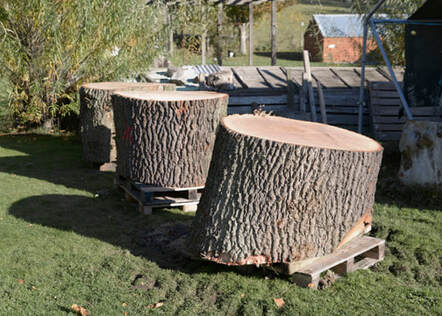furniture wood source low tables & stools benches boxes & chests chairs
"In most cases I use wood from trees that have come to the end of their life."
Usually they are storm damaged and felled by local saw-mills in the Scottish Borders. When a suitable log has caught my eye, I've had it cut to length and delivered to my work place to be split up with wedge-and-mallet and stored to 'air-dry'. Not shopping for 'planked-timber' means I can be resourceful with nail-impregnated hedge-trees or the occasional lightening struck park-tree.
Usually they are storm damaged and felled by local saw-mills in the Scottish Borders. When a suitable log has caught my eye, I've had it cut to length and delivered to my work place to be split up with wedge-and-mallet and stored to 'air-dry'. Not shopping for 'planked-timber' means I can be resourceful with nail-impregnated hedge-trees or the occasional lightening struck park-tree.
This large oak had extensive centre-rot and would normally be earmarked for fire-wood. Cleaving around this area rescued the majority of timber... just wide enough for boxes and small tables.
Bigger trees offer greater possibilities and are generally less wasteful than smaller trees.
I've always accepted that discovery of character within a log is part of the creative risk and occasional surprise. It might be a large knot or meandering twisted grain. It's probably why I've usually worked speculatively, rather than to commission.
Found on the outskirts of my village, these sections of a storm damaged oak are probably of the last big tree I will cleave for furniture. They measure about 1m in dia. and length. The wood is as good as I've found after some 30 years of cleaving oak. It's sinewy, strong and splits reliably along medullary rays.
My intention has been to display the beauty of the material and follow the grain. Leaving evidence of raw riven textures and a subtle pattern of hand-tool marks is an extra feature to the art.

